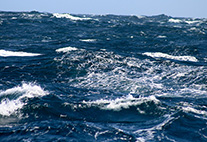Oceanographers warn of gaps in measuring the salinity of the ocean
24 February 2016, by CEN Universität Hamburg

Photo:
Commentary in “Nature Climate Change”: in the upcoming March issue, four respected oceanographers from the USA and Germany warn about the dangers ...
Commentary in “Nature Climate Change”: in the upcoming March issue, four respected oceanographers from the USA and Germany warn about the dangers of cutting back on successful programs to monitor ocean salinity.
“We’ve already seen the first holes in the global data net”, says Detlef Stammer, Director of Universität Hamburg’s Center for Earth System Research and Sustainability and one of the article’s four authors. “In other words, there are gaps in today’s observations, for example in the satellite data. As for important international research programs like Argo and GO-SHIP, another concern is that the financing for the years to come hasn’t been secured.”
The salinity of our oceans is an indicator of essential climate trends: international research programs have been measuring ocean salinity for years, e.g. to shed new light on central climate factors like precipitation and evaporation over the oceans, or the melting of ice in polar regions. But ocean salinity is not only an indicator of climate change; it’s also an important climate motor. Even minor changes in salinity can accelerate or slow global ocean currents, with major consequences for the climate.
In the past, the only tools researchers had for measuring salinity were probes, ships and remote-controlled gliders. For the past few years, they’ve also had the option of measuring salinity by satellite. “To arrive at representative and reliable findings, we urgently need continuous measurements,” stresses Stammer.
More information:
Article in “Nature Climate Change“(detlef.stammer"AT"uni-hamburg.de)
